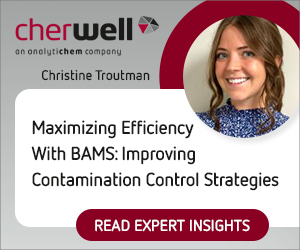Advances in rapid molecular testing mean infectious diseases can be accurately diagnosed in minutes or hours rather than days or weeks and patients can receive appropriate treatment sooner. A guide released by the Infectious Diseases Society of America (IDSA) and American Society for Microbiology (ASM) helps health care providers keep up with the latest technology and know what tests to order and when. The new utilization of microbiology laboratory diagnosis for infectious diseases guide is published in the journal Clinical Infectious Diseases.
The guide updates recommendations published in 2013. “As fast as technology is moving, especially with the genetic and molecular tests, this update was necessary,” said J. Michael Miller, PhD, lead author of the guide and director of Microbiology Technical Services, Dunwoody, Ga. “It also provides guidance in the careful and precise collection and management of blood, urine, skin or other tissue specimens, which is the cornerstone of accurate diagnosis and treatment of an infectious disease and the key to good patient care.”
For example, tissue or fluid is the specimen of choice, but many health care providers send only a swab, which may not even contain the microbe that’s causing the infection. Or the area wasn’t adequately cleaned before blood was drawn or the wound scraped, resulting in a contaminated specimen. The guide also notes the importance of specifically labeling where the specimen came from (such as a cut at “top of right ear” vs. “skin”) helping microbiologists rule out microbes in the culture that aren’t problematic because they normally reside in certain areas of a healthy body. Sometimes a test isn’t necessary at all, the guide notes. For example, there is one standard treatment for ear infections in children and the microbe causing the infection can only be accurately collected by inserting a needle behind the eardrum, which is very painful.
Guidance in lab diagnostics is vital because choosing the incorrect test or providing a contaminated or inadequate tissue specimen can lead to a wrong diagnosis and treatment that’s not only harmful for the patient, but costly, such as leading to an extra day in the hospital.
Extensive tables provide detailed guidance in the use and limitations of the tests, organized by type of infection (such as urinary tract or upper respiratory) to help health care providers determine not only which test might be best, but which type of specimen is most appropriate. The guide also includes expanded information on pediatric needs and testing for tick-borne diseases such as Lyme disease as well as information on the advancements in diagnostics, including nucleic acid amplification tests that can identify organisms faster and far less expensively than in the past.
“Instead of using a shotgun approach and prescribing broad spectrum antibiotics, these new rapid diagnostic tests can help health care providers target the specific organism causing the infection much sooner than traditional microbiologic tests,” said Melvin P. Weinstein, MD, FIDSA a co-author of the guide and chief of Infectious Diseases, Allergy and Immunology at Rutgers Robert Wood Johnson Medical School, New Brunswick, N.J.
The guide underscores the need for microbiologists to receive special training and for the laboratory to be led by a board-certified microbiology director or have access to board certification through a consultant in order to ensure high quality care. The guide also notes that excellent patient care is only possible through a collaborative, multidisciplinary approach.
“ID physicians are microbiologists’ closest colleagues in supporting the need for a high-quality diagnostic process, start to finish,” said Dr. Miller. “They understand the microbiology component and can serve as liaisons between the lab and other health care providers as can board certified microbiologists.”
The IDSA/ASM guide panel includes experts in the fields of infectious diseases, microbiology, pathology and pediatrics. In addition to Drs. Miller and Weinstein, the panel includes: Mathew J. Binnicker, PhD; Sheldon Campbell, MD, PhD; Karen C. Carroll, MD, FIDSA; Kimberle C. Chapin, MD; Peter H. Gilligan, PhD; Mark D. Gonzalez, PhD; Robert C. Jerris, PhD; Sue C. Kehl, PhD; Robin Patel, MD, FIDSA; Bobbi S. Pritt, MD; Sandra S. Richter, MD, FIDSA; Barbara Robinson-Dunn, PhD, FIDSA; Joseph D. Schwartzman, MD, FIDSA; James W. Snyder, PhD; Sam Telford, III, SD; Elitza S. Theel, PhD; Richard B. Thomson Jr. PhD; and Joseph D. Yao, MD, FIDSA.
IDSA has published more than 50 treatment guidelines on various conditions and infections, ranging from HIV/AIDS to skin and soft tissue infections.. The full guide is available free on the Clinical Infectious Diseases website.
















